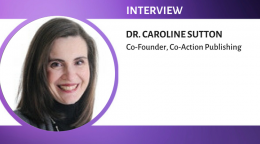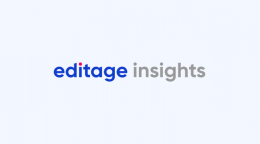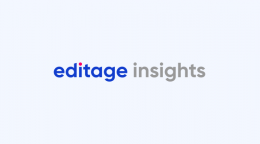Empowering authors: How journals can enhance the value of open access publishing

The open access movement has gained traction at an impressive rate. No longer a niche option, open access publishing has become a popular choice, with major funders and prominent institutions imposing mandates (e.g. NIH Public Access Policy and Plan S) for publishing associated work in open access. As a growing number of authors opt for open access routes to publish their research, it has become crucial for scholarly publishers to enhance the value of open access publishing for authors by implementing a range of supportive initiatives and services that align with authors' needs and goals.
Enhancing the author experience in open access publishing is a powerful strategy for publishers aiming to attract leading researchers and high-quality research to their journals. This approach can not only help boost submission volumes but also solidify their position as front-runners in the dynamic open access landscape. By making open access publishing more advantageous for authors, publishers can significantly elevate the visibility and impact of these publications, enhancing their own reputation. Furthermore, as the industry transitions away from traditional subscription models, embracing open access along with providing advanced author support and services can empower publishers to effectively collaborate with leading institutions and funding agencies.
We’re exploring five ways journals can enhance the value of open access publishing for their authors, making the overall experience more appealing and rewarding.
1. Breaking down cost barriers
The conventional open access publishing model tends to impose publishing fees on authors, which can be a significant barrier for authors publishing open access. To enhance accessibility to open access publishing, particularly for those authors from low- and middle-income countries, underrepresented groups, or those without grant funding, journals can implement waivers or reduced article processing charges (APCs). BMJ journals provide APC waivers for authors from low-income countries and in certain cases may also offer discounts to authors from other countries.
Furthermore, publishers should explore open access models that entirely remove these fees, streamlining the publishing experience for authors. For publishers operating under an APC model, transitioning may require them to explore and implement a variety of alternative sustainable financial models. For example, PLOS collaborates with institutions to enhance open access publishing through innovative approaches such as flat fee agreements, global equity partnerships, and community action publishing memberships. Moreover, as the scholarly publishing landscape evolves, it's crucial for these models to reflect the diverse requirements of the global research ecosystem. PLOS emphasizes that their partnerships are frequently customized to align with the specific publishing needs and regional economic contexts of researchers and their affiliated institutions.
Providing guidance and resources to help authors identify and secure funding sources for open access publishing—such as grants, institutional memberships, or sponsorships—can empower them to share their work without financial barriers. Additionally, journals can collaborate with universities and research institutions to help cover APCs for their affiliated researchers.
2. Amplifying post-publication promotion
Leveraging social media is a crucial strategy for publishers in the modern scholarly communication landscape. Research has shown that open access articles tend to garner more social media engagement and views compared to ones behind paywalls. For example, it has been found that open access publications receive more mentions on social media and are accessed more frequently on platforms like Mendeley, ultimately enhancing their visibility and impact. So, by sharing articles across platforms such as Twitter, LinkedIn, and Facebook, publishers can significantly increase the visibility of open access publications.
To ensure that research published in open access gets the maximum reach, journals could actively promote published articles by utilizing a range of marketing strategies, including social media outreach, newsletters, and press releases. Open access journals can collaborate with various media outlets, enabling them to effectively communicate important findings, thereby reaching a wider audience. Furthermore, open access publishers can spotlight the authors themselves, by featuring author interviews, creating profiles, or producing engaging videos that highlight the researchers behind open access publications, which not only humanizes the research but also fosters a stronger connection between the audience and the authors. PLOS provides comprehensive media services designed to help authors effectively promote their research. This includes the creation and distribution of press releases, as well as coordinating interviews with journalists to enhance visibility.
3. Integrating value-added services
Value-added services such as plain language summaries (PLSs) and graphical abstracts play a crucial role in enhancing the accessibility and comprehensibility of open access research, ensuring that they are not just accessible but also better understood by a wider audience. These services not only benefit authors, audiences, and publishers by amplifying the visibility, impact, and outreach of scholarly articles but also help bridge the gap between complex academic research and general understanding among non-specialists, including important stakeholders like policymakers and educators.
By simplifying key findings into digestible formats, PLSs can effectively extend the reach of research beyond the confines of academia, which can lead to meaningful societal changes and increased public engagement. Similarly, visual abstracts utilize eye-catching graphics to encapsulate the main findings, making them highly shareable on popular social media platforms such as Twitter, LinkedIn, and Instagram, ultimately emphasizing the value of these services in aligning with the open-access mission of democratizing research. KI Reports features graphical abstracts with original research articles. While the journal may create these abstracts in-house, it also encourages authors to use their own graphical abstracts for enhanced research presentations and promotional efforts.
4. Indexing to improve article discoverability
Open articles, known for their greater citation impact compared to those behind paywalls, inherently offer advantages like increased visibility and a broader audience reach. One of the factors for enhancing the exposure and reach of open access articles is attributed to effective Search Engine Optimization (SEO). By ensuring open access papers are accurately indexed across multiple platforms, journals can enable search engines to fetch more metadata and improve rankings based on keywords.
There's a growing expectation for researchers to clearly demonstrate the societal impact of their studies, which has become an important aspect of academic publishing. To further support their authors, journals could implement Altmetrics, offering detailed metrics on article downloads, shares, and social media mentions, to clearly illustrate the reach and impact of their work during tenure applications or grant proposals.
5. Offering flexible licensing options
An essential aspect of fostering open science lies in ensuring that authors have the capability to make their research findings not only accessible and available but also re-usable. There has been a growing interest in enhancing open access through rights retention policies, which enable researchers to gain more autonomy over their work. These policies play a crucial role in correcting the typical imbalance where publishers have exclusive control over scholarly publications, giving researchers options to choose licenses that enable broader distribution of their research.
By offering flexible copyright options in open access publishing, publishers can empower authors to maintain vital rights over their work, enabling them to share their work through different avenues, such as through institutional repositories or personal websites, without needing to seek permission from publishers, which is particularly advantageous in rapidly evolving fields where timely access to research is critical. AlP Publishing offers authors publishing in open access the flexibility to choose from three different Creative Commons licenses. This choice enables authors, as well as their employers, to retain copyright ownership of their articles.
Conclusion
Offering more funding opportunities, collaborative networks, flexible licensing options, and analytics tools can greatly enhance the overall appeal of open access publishing. By developing a more intuitive and user-friendly platform for authors, journals can create a smoother and more fulfilling publication experience. Moreover, open access journals can ensure that authors feel supported and empowered, fostering a truly inclusive environment where their contributions are accessible to all and celebrated within the scientific community.
Comments
You're looking to give wings to your academic career and publication journey. We like that!
Why don't we give you complete access! Create a free account and get unlimited access to all resources & a vibrant researcher community.

Subscribe to Journal Selection
After writing a research paper, the next step is to find the right journal to publish it. Subscribe and get curated content to find the perfect journal that will give impetus to your research paper and your career.













